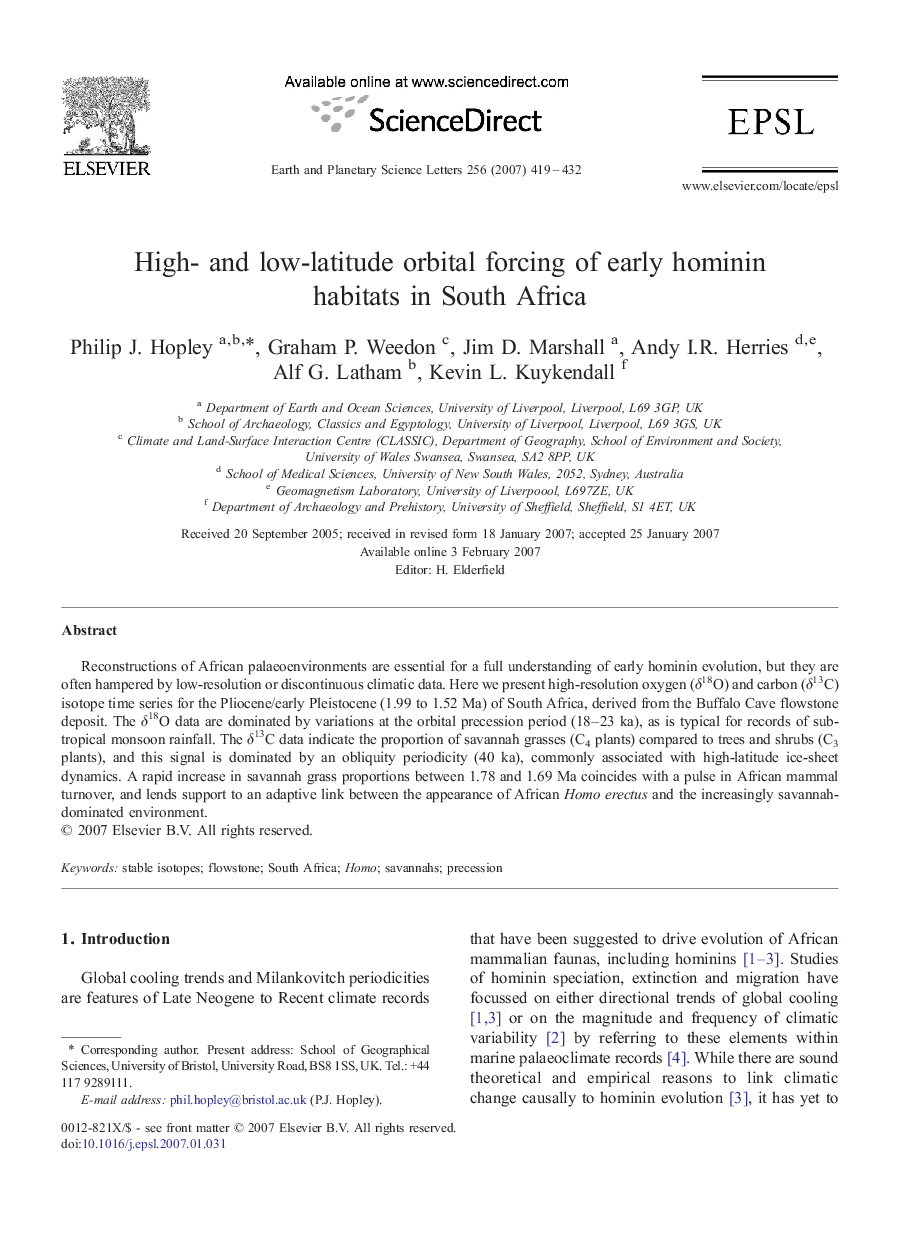| Article ID | Journal | Published Year | Pages | File Type |
|---|---|---|---|---|
| 4680590 | Earth and Planetary Science Letters | 2007 | 14 Pages |
Reconstructions of African palaeoenvironments are essential for a full understanding of early hominin evolution, but they are often hampered by low-resolution or discontinuous climatic data. Here we present high-resolution oxygen (δ18O) and carbon (δ13C) isotope time series for the Pliocene/early Pleistocene (1.99 to 1.52 Ma) of South Africa, derived from the Buffalo Cave flowstone deposit. The δ18O data are dominated by variations at the orbital precession period (18–23 ka), as is typical for records of sub-tropical monsoon rainfall. The δ13C data indicate the proportion of savannah grasses (C4 plants) compared to trees and shrubs (C3 plants), and this signal is dominated by an obliquity periodicity (40 ka), commonly associated with high-latitude ice-sheet dynamics. A rapid increase in savannah grass proportions between 1.78 and 1.69 Ma coincides with a pulse in African mammal turnover, and lends support to an adaptive link between the appearance of African Homo erectus and the increasingly savannah-dominated environment.
